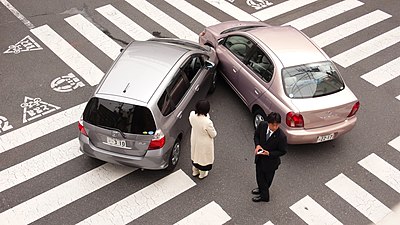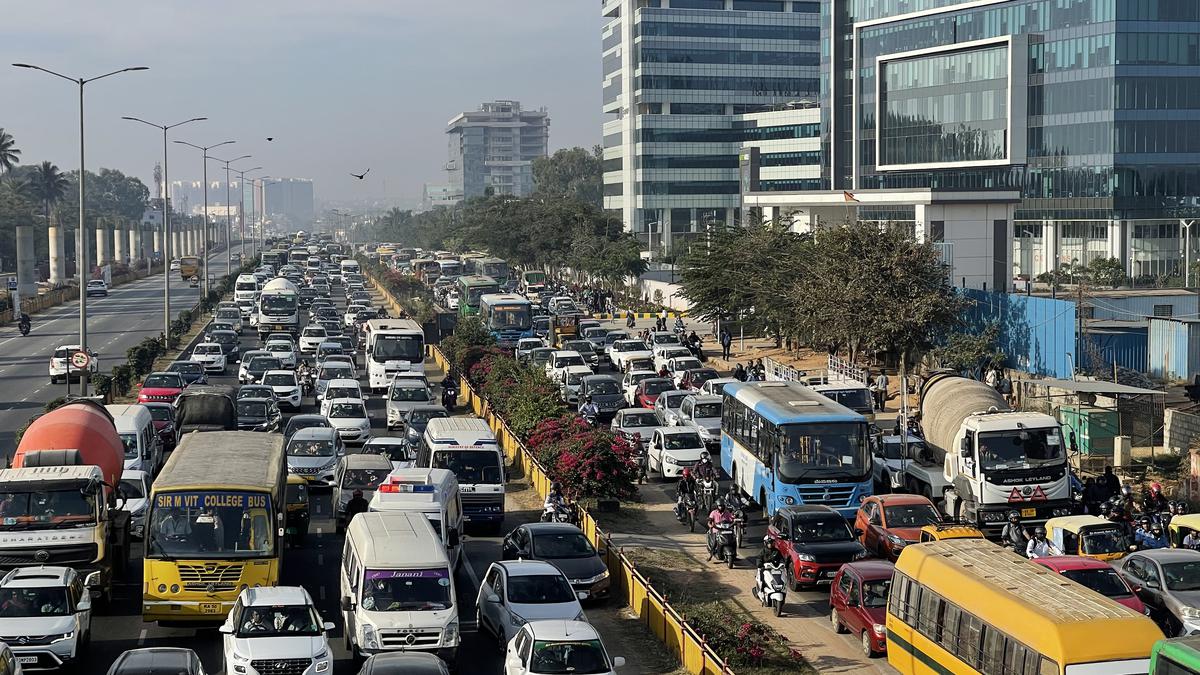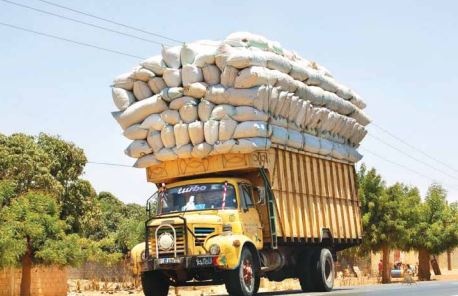Dangerous goods are substances and articles that have explosive, flammable, toxic, infectious or corrosive properties and pose a risk to public safety, property and the environment. The transportation of these goods involves the implementation of adequate measures to ensure their transit in total security and safety. Let us take a brief look at the various legal requirements and precautions to be taken while transporting such materials.
The proportion of hazardous chemicals in total freight traffic is increasing at a rapid rate. Of the carriers that carry hazardous goods approximately two-thirds of them carry flammable petroleum products including kerosene, petrol, LPG, naphtha, etc. The movement of such substances is more prone to accident than the movement of other goods. When involved in a road accident, may cause disastrous consequences like fire, explosion, injuries, in addition to property loss and environmental pollution.
The safety codes and safety requirements to be followed in transportation of hazardous materials are laid down in the Central Motor Vehicles Rules.
TRANSPORTATION OF GOODS OF DANGEROUS OR HAZARDOUS NATURE
Rule 129
• Every goods carriage carrying dangerous or hazardous goods shall display a distinct mark of the class label appropriate to the type of dangerous or hazardous goods.
• Every package containing dangerous or hazardous goods shall display the distinct class labels appropriate to the type of dangerous or hazardous goods.
• In the case of packages containing goods which represent more than one hazard, such packages shall display distinct labels to indicate the hazards.
• Every goods carriage carrying goods of dangerous or hazardous nature shall be fitted with a techograph, an instrument to record the lapse of running time of the motor vehicle; time speed maintained, acceleration and declaration etc., and a spark arrester.
Rule 130
MANNER OF DISPLAY OF CLASS LABELS
• The class label shall be so positioned that the size of the label is at angle of 45 degrees to the vertical and the size of such label shall not be of less than 25 mm square which may be divided into two portions, the upper half portion being reserved for the pictorial symbol and the lower half for the test.
Rule 131
RESPONSIBILITY OF THE CONSIGNOR FOR SAFE TRANSPORT OF
DANGEROUS OR
HAZARDOUS GOODS
The consignor has to ensure the following points
• The goods carriage has a valid registration to carry the hazardous goods.
• The vehicle is equipped with necessary First-aid, Safety equipments and antidotes as may be necessary.
• The transporter or owner of the goods carriage has full and adequate information about the dangerous or hazardous goods being transported.
• The driver of the goods carriage is trained in handling the dangers posed during transport of such goods.
• Every consignor shall supply to the owner of the goods carriage full and adequate information about the dangerous or hazardous goods, being transported as to enable such owner and its driver:
• To make aware of the safety rules for transportation of hazardous materials.
• To make aware of the risks created by such goods to health or safety of any person.
Rule 132
RESPONSIBILITY OF THE TRANSPORTER OR OWNER OF GOODS CARRIAGE
• It shall be the responsibility of the owner or transporter to ensure the following
• The goods carriage has valid registration and permit and is safe for the transportation of the said goods.
• The vehicle is equipped with necessary first-aid, safety equipment tool box and antidotes as may be necessaty to contain any accident.
• The owner or transporter should satisfy himself that the information given by the consignor is full and accurate.
• The owner or transporter should ensure that the driver being deputed for transportation is trained to handle and transport such hazardous materials.
• The owner of the goods carriage carrying dangerous or hazardous goods and the consignor of such goods shall lay down the route for each trip.
• The owner of the goods carriage should ensure that the driver holds a driving Licence as per provisions of Rule 9, of the Central Motor Vehicle Rules.
• As per Rule 9, the driver should have the ability to read and write at least one Indian language specified in the Seventh Schedule of the Constitution, and in the English language.
• The driver should have successfully passed a course connected with the transport of hazardous goods.
Rule 133
RESPONSIBILITY OF THE DRIVER
It is the responsibility of the driver to keep all information provided to him in writing i.e., in the form TREM CARD (Transport Emergency Card). This is to be kept in the driver’s cabin and is available at all times while hazardous material related to it is being transported.
Rule 134
EMERGENCY
INFORMATION PANEL
• It is essential for every hazardous material carrier to display correctly the emergency information panel.
• Emergency information panel should be legibly and conspicuously marked in each of the three places specified so that the emergency information panel faces each side of the carriage and its rear. Such panel shall contain the following information:
• The correct technical name of the dangerous or hazardous goods in letters not less than 50mm high.
• The United Nations class number for the dangerous goods in letters not less than 100mm high.
• The class label of the dangerous or hazardous goods in the size of not less than 250mm square.
• The name and telephone number of the emergency services to be contacted in the event of fire or any other accident in letters and numerals that are not less than 50mm high, and the name and telephone number of the consignor of the dangerous or hazardous goods or of some other person from whom expert information and advice can be obtained concerning the measures that should be taken in the event of an emergency.
Rule 135
DRIVER TO BE
INSTRUCTED
The owner of every goods carriage transporting dangerous or hazardous goods shall ensure to the satisfaction of the consignor that the driver of the goods carriage has recieved adequate instructions and training to enable him to understand the nature of the goods being transported by him, the nature of the risks arising out of such goods, precautions he should take while the goods carriage is in motion or stationary, and the action he has to take in case of any emergency.
Rule 136
DRIVER TO REPORT TO THE POLICE STATION ABOUT ACCIDENT
The driver of a goods carriage transporting any dangerous or hazardous goods shall, on the occurrence of an accident involving any dangerous or hazardous goods transported by his carriage, report forthwith to the nearest police station and also inform the owner of the goods carriage or the transporter regarding the accident.
Rule 137
CLASS LABELS
In respect of the dangerous or hazardous goods specified below, the labels shall be listed as: classification of Hazardous Goods – Class Label (Image below)
Educational Qualifications for Drivers of Carriages Carrying Dangerous or Hazardous Goods:
One year from the date of commencement of the Central Motor Vehicles (Amendment) Rules, 1993, any person driving a goods carriage carrying goods of dangerous or hazardous nature to human life shall, in addition to being the holder of a driving licence to drive a transport vehicle, also has the ability to read and write at least one Indian language out of those specified in the Seventh Schedule of the Constitution, and in English language. The driver should also possess a certificate of having successfully passed a course consisting of the following syllabus and periodicity connected with the transport of such goods.
Period of training: 3 Days
Place of training: At any institute recognised by the State Government
A. Defensive Driving
Questionnaire, Cause of Accidents, Accidents Statistics, Driver’s Personal Fitness, Car Condition, Braking Distance, Highway Driving, Road/Pedestrian Crossing, Railway Crossing, Adapting to Weather, Head-on Collision, Rear-End Collision, Night Driving, Films and Discussion
B. Advance Driving Skills and Training
(i) Place of training: At any institute recognised by the State Government
Duration of Training for A & B: 1st and 2nd Day
Hazard Classifications
Dangerous goods must be classified in accordance with the requirements and assigned a number, name, description and packing group (where appropriate) as indicated in the Dangerous Goods list. They are therefore assigned to different classes depending on their predominant hazard which can be seen below.
For packing purposes, substances are assigned to a specific packing group based on the level of danger they present:
Packing Group I – Substances presenting a high danger
Packing Group II – Substances presenting a medium danger
Packing Group III – Substances presenting a low danger
The UN Model Regulations use a classification system in which each dangerous substance or article is assigned to a class depending upon the nature of the danger it presents. There are, as can be seen above, nine classes, some of which are sub-divided as detailed below.
CLASS 1 – Explosives
Although explosives can behave in a violent way when suitably initiated, they are designed to be quite stable and insensitive under normal surface conditions. This means that they can be handled and transported by land and sea quite safely, so long as they are not subjected to violent shock, as in a high-speed traffic accident, or worse, allowed to heat up in a fire.
There are six divisions in Class 1. The divisions show how the explosives will react and behave when initiated. The items are also assigned one of the 13 Compatibility Group letters, basically to indicate which types may travel safely with which.
Explosives are declared as NEQ (Net Explosive Quantity) when described in the transport document, separate to the gross weight.
Division 1.1 – Mass explosion hazard
Division 1.2 – Projection hazard only
Division 1.3 – Fire hazard, minor explosion or minor projection hazard
Division 1.4 – Minimal hazard
Division 1.5 – Blasting agents
Division 1.6 – Very insensitive detonating articles
CLASS 2 – Gases
Gases are mostly carried under pressure to reduce their volume, and as a result, also save space in transport and storage. This pressure itself creates a danger if it is released suddenly. The pressure never dissipates, unlike heat, which is transferred to or from the surroundings until a uniform temperature prevails.
Applying pressure to gases will reduce their volume, but if they turn to liquid under pressure, the volume is reduced much further several hundred times. Some gases liquefy under pressure at normal temperatures, e.g. liquefied petroleum gases, chlorine, and ammonia.
But some of the permanent gases will only liquefy if they are also refrigerated down to very low (critical) temperatures, e.g. as low as – 269° C for liquid helium. These include oxygen, nitrogen, hydrogen, helium, neon, and argon. Once liquefied, they have to be contained in special heavily insulated containers to prevent them from warming up. Extreme cold poses a significant danger, especially if cold metal or other surfaces are accidentally touched without protection. Also, the release of very cold gas can create a serious breathing hazard, causing direct damage to the lungs or leading to localized oxygen deprivation.
Class 2 gases have three divisions
Division 2.1 – Flammable gases
Division 2.2 – Non-flammable and non-toxic gases
Division 2.3 – Toxic gases
Unfortunately, as is the case in everything we do, we can add one unreliable ingredient into the mix, humans.
CLASS 3 – Flammable Liquids
Some flammable liquids derive from petroleum, such as petrol and kerosene, whereas others are manufactured through natural or industrial processes such as alcohols.
Vapours are created when some molecules in the liquid have sufficient energy and are moving with sufficient velocity to break clear of the surface into the air space above. The warmer the liquid, the more molecules reach this energy and velocity level, and the faster the vapour is formed.
The vapours are invisible, and always much heavier than air. They will flow downhill and collect at the lowest point.
Flammable liquids are placed in packing groups according to their boiling point and flashpoint.
PACKING GROUP INITIAL BOILING POINT FLASHPOINT (CLOSED CUP)
CLASS 4.1 / 4.2 / 4.3
Flammable solids, spontaneously combustible and dangerous when wet.
CLASS 4.1 – Flammable Solids
These will burn easily, more so than ordinary combustible materials such as wood and paper. The burning may be fierce and rapid, creating great heat.
Some 4.1 are desensitised explosives, e.g. wetted trinitrotoluene (TNT) which would otherwise be in Class 1. Some are self-reactive, and are liable to break down chemically, if they get above a certain temperature, or are subjected to shock etc.
CLASS 4.2 – Spontaneously Combustible
Division 4.2 goods are either solids or liquids. They will ignite spontaneously in contact with oxygen. They must be kept in airtight packages or as liquids under inert gas or liquid blanket. Pyrophoric materials will ignite within five minutes of coming into contact with air and are always assigned to Packing Group I. Other materials will ignite only when in large amounts and after long periods of time. These are in Packing Group II or III, depending on classification tests.
CLASS 4.3 – Dangerous When Wet
Division 4.3 goods react with water, either as a liquid or as vapour, and generate flammable gas. This can be ignited by the heat of the reaction. They must be kept in watertight containers, hermetically sealed to avoid the entry of moisture or water vapour.
CLASS 5.1 / 5.2
Oxidising Agents and Organic Peroxides
CLASS 5.1 – Oxidising Agents
Because of their high oxygen content, these are often reactive materials. They may react with other flammable or combustible materials, and the heat generated may start the latter burning.
The agents then supply the oxygen to keep them burning without any help from oxygen in the air, as is the case with normal combustion.
Such fires may, therefore, break out and continue in confined spaces, e.g. inside cargo holds, and once started, may be difficult to extinguish. Blanketing with powder or foam is useless as the oxygen is already present in the agent underneath.
Some oxidisers can be explosive if heated strongly, particularly in the presence of carbon. Ammonium nitrate mixed with hydrocarbon oil, e.g. diesel, becomes a powerful explosive, much used in the extractive industries, and by terrorists.
CLASS 5.2 – Organic Peroxides
The molecule contains structures containing carbon (organic) linked by a double oxygen bond (peroxide). Thus, the fuel and the oxygen are together in the same molecule, making them even more liable to ignition than a separate combustible material.
They are designed to be reactive for a number of industrial purposes, and may consequently be unstable, and sometimes explosive. When they are first developed, they may be classified as either Class 1 or Class 5.2 generally depending on the intended end-use. On the basis of their chemical structure alone, they could be considered as either.
They often have to be maintained under refrigeration to keep them inactive, and then the temperature must be carefully controlled. If they exceed a certain temperature specific to the material, they will start to decompose rapidly, similar to the self-reactive materials in Class 4.1, resulting in uncontrollable progress towards fire or explosion.
Because of their reactive nature, they can be very damaging to the human body, particularly the eyes.
CLASS 6.1 / 6.2
Toxic and Infectious Substances
CLASS 6.1 – Toxic Sign
These are chemical poisons that can damage the human body, in whole or in part. They must not be allowed to get inside the body through swallowing, breathing in, or by absorption through the skin.
The toxics range in power from those which kill in minutes, e.g. the cyanides, to those which would injure but not necessarily kill, so long as the dose was not excessive, e.g. the chlorinated hydrocarbons toxics in Class 6.1 can be in solid or liquid form.
Toxic gases are in Class 2.3
Generally, 6.1 must not be carried with foodstuffs, however, there are exceptions.
CLASS 6.2 – Infectious Substances
Division 6.2 goods contain pathogens, i.e. micro-organisms that cause infectious disease in humans or animals. They are graded for danger for transport into one of three groups, of which only the first two are considered dangerous for transport on infectious grounds.
Category A: Capable of causing permanent disability, life-threatening or fatal disease to humans or animals. These are assigned to UN 2814. Some examples being:
• Ebola Virus
• Hepatitis B Virus
• Lassa Virus
• Rabies Virus
Infectious substances or viruses which cause disease only in animals are assigned to UN 2900. Some examples are:
- African Horse Sickness
- Foot & Mouth Disease
- Sheeppox
- Vesicular Stomatitis
CLASS 7 – Radioactive Substances
These radioactive materials are materials containing unstable atoms that change their structure spontaneously in a random fashion over time.
As each atom changes, they emit invisible radiation that may cause chemical or biological change, known as ionizing radiation. This can damage the body in some way or other, depending on the type of radiation, and the duration of the exposure.
Ionizing radiation is generally dangerous to the human body, depending on the type of radiation, the dose and the duration of the exposure.
Some radioactive materials may also have other hazardous properties, and packages may, therefore, carry other UN warning signs to indicate subsidiary risks.
Radioactive packages are perfectly safe to handle and transport because the packaging acts as a shield. They will not create any health hazard for transport workers. However, the rule is to keep any dose of ionizing radiation to a minimum. The dose, in turn, depends on:
• The strength of the radioactive source, the “activity”
• The distance from the source
• The barriers around the source
• The exposure time
Excepted Packages
The radiation level at the surface must be below 5 mSv/hour.
The Sievert symbol, Sv is a derived unit of ionizing radiation dose in the International System of Units (SI) and is a measure of the health effect of low levels of ionizing radiation on the human body).
The packages must be declared as radioactive on the declaration, but they do not need to be labelled. In default of other hazardous properties, they can be carried as ordinary goods.
CLASS 8 – Corrosive Substances
These are highly reactive materials that produce positive chemical effects, resulting in changes in the affected materials.
For this reasons, corrosives are used extensively in industry to produce a wide range of transformations and effects.
This active nature can obviously be very damaging to the body. They work from outside the body by destroying the tissue, in the opposite way to the toxics, which works from inside the body on the various organs and life systems.
Corrosives are described as either acids or alkalis. Acids react with metals which are generally strong and flexible, to produce salts, which can be fragile crystals that are soluble in water. Inorganic acids include carboxylic, acetic, formic, and benzoic, and fatty acids like oleic, palmitic, and stearic.
Common alkalis are sodium and potassium hydroxide, ammonium hydroxide. These are very corrosive to skin, eyes and mucous membranes. Alkalis neutralise acids, but the reaction may be strong and create a lot of heat very rapidly. This can cause the water in the solution to flash off to steam violently, throwing the material aside in a dangerous fashion.
Corrosives are placed in Packing Groups according to their ability to cause full thickness destruction of intact skin tissue within a certain observation period, starting after a certain exposure time, measured in minutes, hours, or days.
There are strict requirements on the carriage of acids and alkalis during sea journeys (IMDG Regulations)
CLASS 9 – Miscellaneous Dangerous Substances and Articles
Class 9 covers substances and articles which during carriage, present a danger not covered by the heading of other classes.
Such products have properties that cannot be included elsewhere in the UN Class system, or which have a number of disconnected dangers crossing two or more Class boundaries.
These also include hazardous substances and wastes, such as environmentally hazardous substances, miscellaneous articles and substances that are transported at elevated temperatures such as tar (bitumen) and also some foodstuffs
An example of this diversity is self-inflating life rafts, which include in the package:
• A large compressed gas cylinder, usually carbon dioxide, to inflate the raft and its canopy when it hits the water.
• Various explosive flares, coloured smoke candles, etc. for attracting the attention of rescuing air and sea craft.
• Flammable solid materials for heating food and providing warmth.
• Fabric repair kits, containing flammable liquids as the base for adhesive solutions.
The Class sign is unique in the UN system in that it gives no indication of the particular danger, which can only then be obtained from written information.
There are two UN numbers in Class 9 for environmentally hazardous materials. UN 3077 Environmentally Hazardous Substance Solid N.O.S and UN 3082 Environmentally Hazardous Substance Liquid N.O.S.
Hazardous Material includes a number of other products identified which may not be included in the above list of Classes 1 – 9. These are classified as “Obnoxious” and for the purposes of carriage would fall within Class 9. These include:
- Animal Waste
- Refuse
- Hospital Waste
- Pressurised Gases
- Pressurised Liquids
- Asbestos






